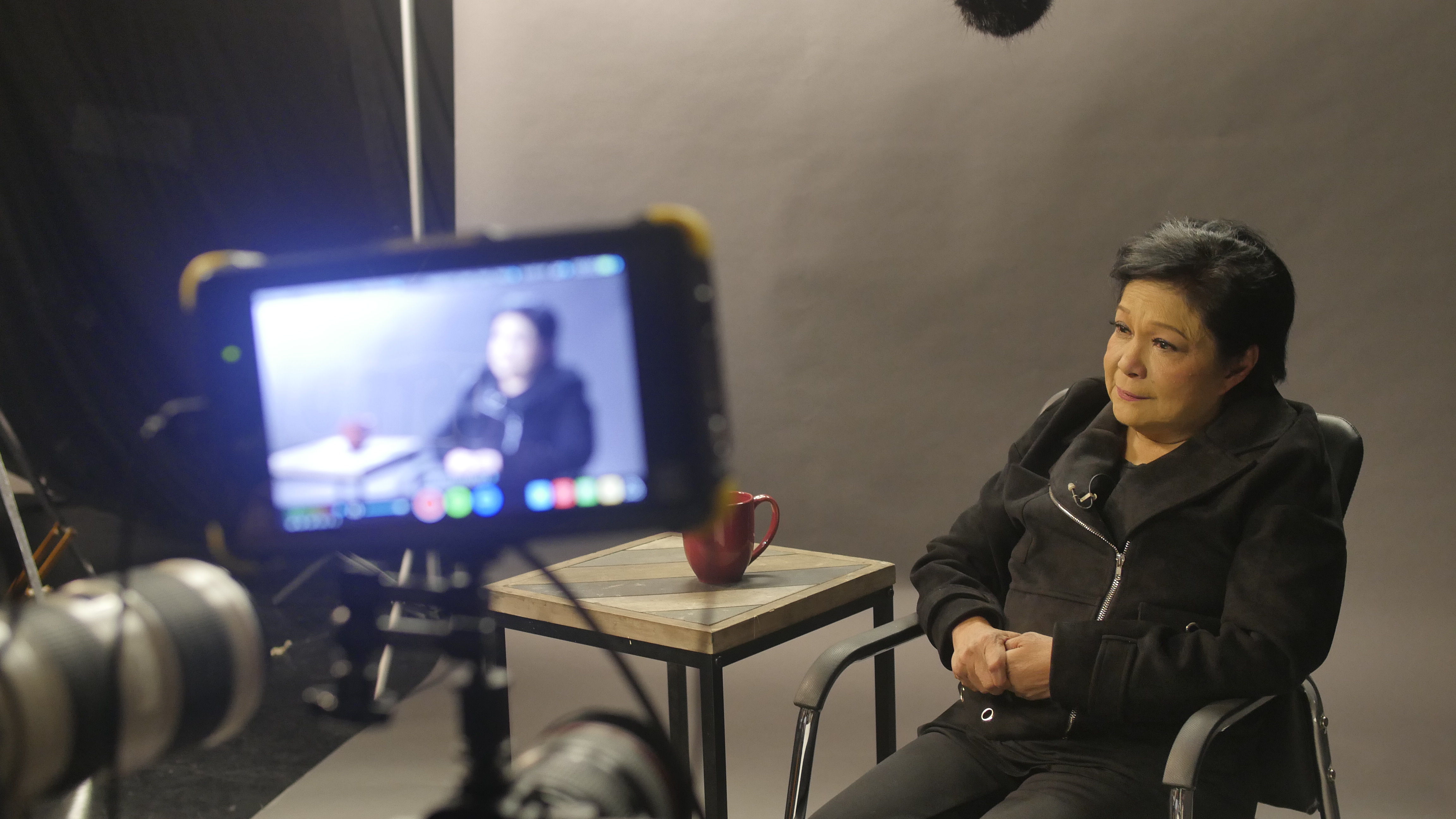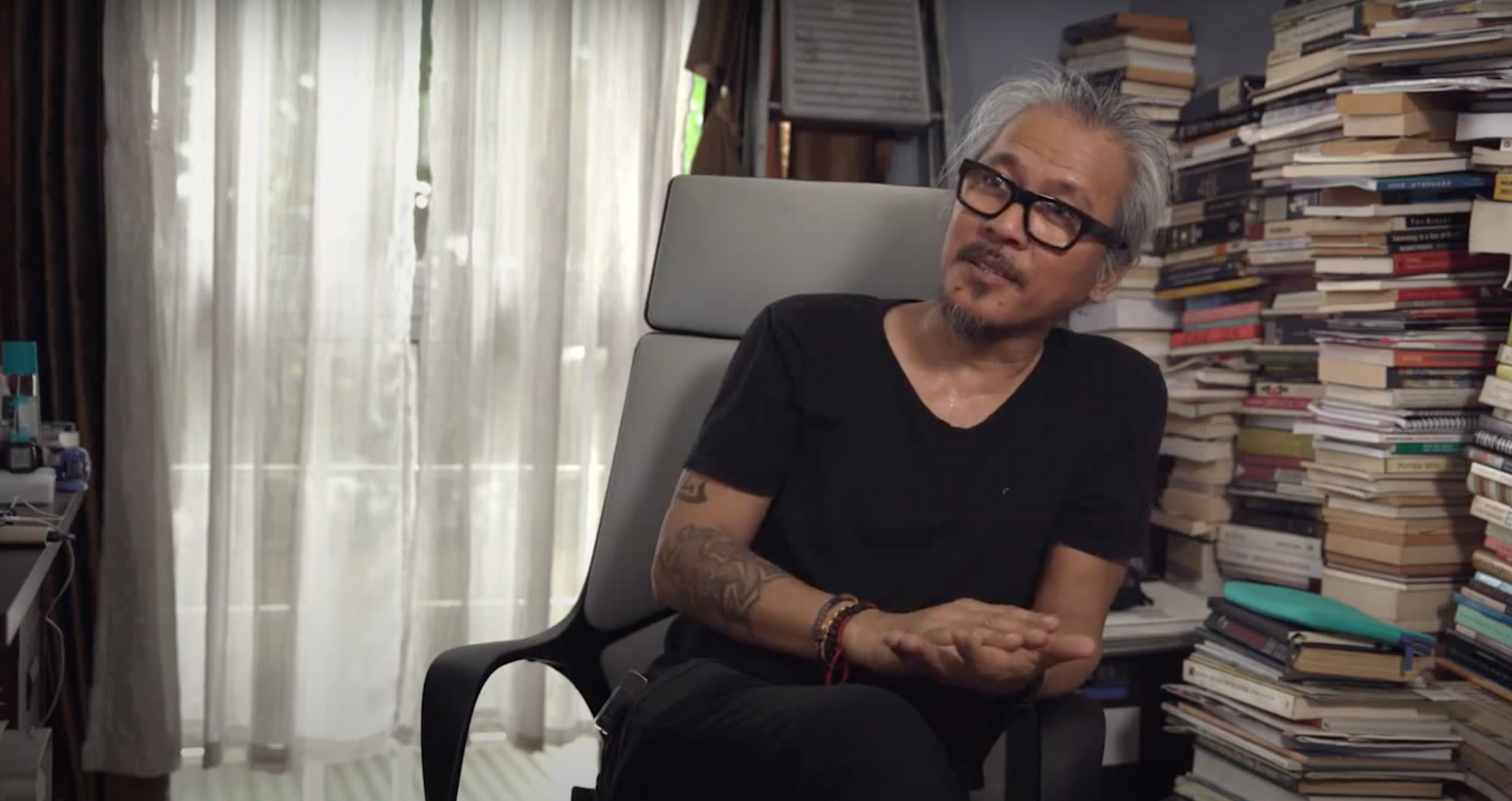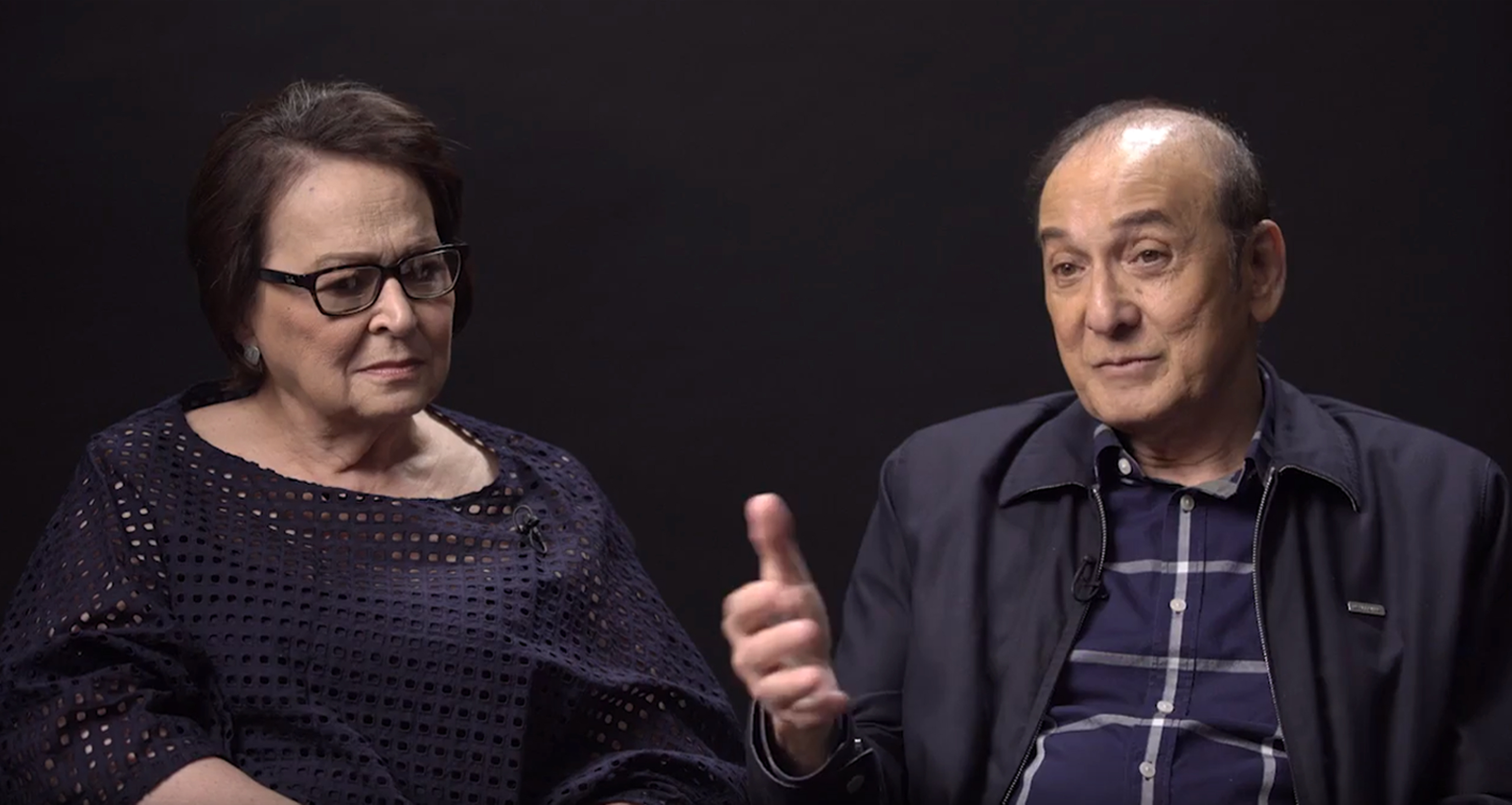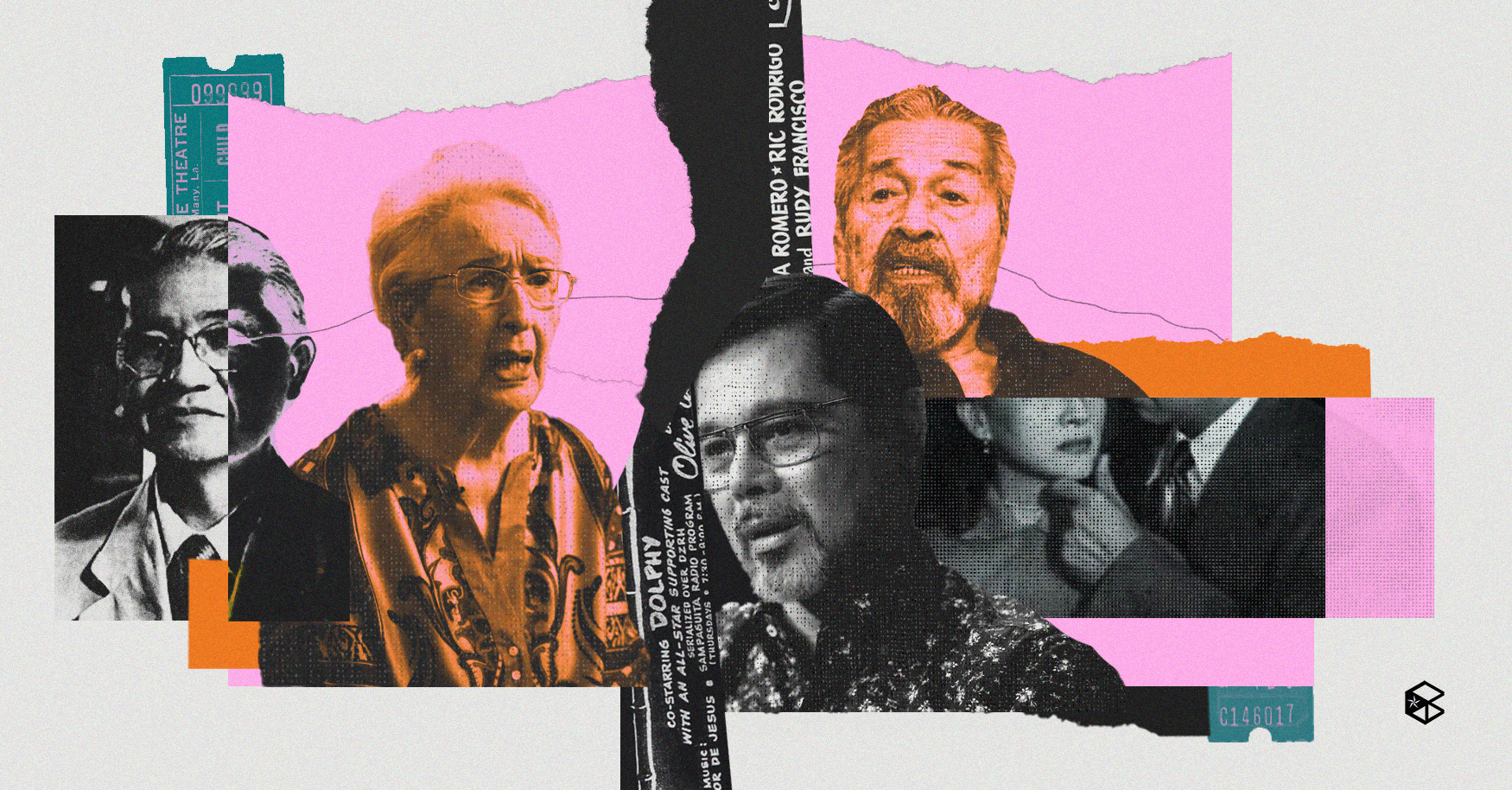“Habambuhay: Remembering Philippine Cinema” is a documentary series chronicling the important individuals who shaped the film industry in the country. Directed by celebrated screenwriter Clodualdo “Doy” del Mundo Jr (Maynila: Sa Mga Kuko ng Liwanag, Kisapmata), the first two episodes can now be streamed on TBA Studios’ YouTube channel.

The first 100 years
The first part of the docuseries, titled “Sandaan, Sangandaan At the Crossroads: 100 Years of Philippine Cinema,” recounts the early days of the industry with Jose Nepomuceno, "founder of Philippine movies,” and his zarzuela film “Dalagang Bukid.” The film marked the beginning of movie making in the Philippines back in 1919.
The hour-long special episode breezes through the decades with the domination of production companies such as Sampaguita Pictures and LVN Pictures, along with memorable actors and actresses in Gloria Romero, the late Eddie Garcia, and the late Anita Linda. Then came the 1970s, which sparked the birth of bomba films which cater to adult audiences.
Around this time, Filipino filmmakers widely celebrated today in Lino Brocka and Ishmael Bernal paved the way for stories on the silver screen that showcase the harsh realities of Philippine society. In line with this, Vilma Santos, Nora Aunor, Bembol Roco, and Christopher de Leon to name a few, have bolstered a new generation of actors in an era of discovery and Filipino films slowly being regarded as a high form of art.
Furthermore, it opened the doors to Valhalla for experimental cinema in the country. Known filmmakers in Lav Diaz stepped out of bounds from the conformity in telling stories in the film medium. Shying away from the usual two-hour runtime, Diaz’s characters and stories will sit with viewers for an extensive runtime, allowing them to grasp the magnificence of slow cinema storytelling.
But in the turn of the 21st century, independent filmmakers and stories have maximized and exercised creativity in the methods of filmmaking. There was a problem in the audience losing interest in the mainstream films who have the knack for repeating the same formula over and over again. Thus, the new blood in filmmakers Diaz and Brillante Mendoza highlight the opportunities for independent cinema to strive in the new millennium.
“We never learn from our past because we never try to understand our past. We never have discussions about our past,” Laurice Guillen, Filipino actress, director, and current Cinemalaya President, shared.
At the end of the day, Filipino films that reflect its current times and society have always thrived for realism. For Diaz, “good cinema” is an honest presentation of society. “Ano ‘yung mga katotohanan ng kultura natin, ng bayan natin? Dapat natin isalamin ‘yun sa ginagawa natin,” he remarked.

Moreover, the second part of the docuseries, “The Eigenmanns: A Family Legacy," highlights the colorful lives of the Eigenmanns. On the forefront of the family, retired actor and singer Eddie Mesa and actress and singer Rosemarie Gil have contributed their renowned family of actors and performers to the industry.

Three of their children: the late Mark Gil, Michael de Mesa, and Cherie Gil—have made their legacy through their performances recognized by award-giving bodies and iconic characters immortalized on screen. Having all worked with the industry's celebrated filmmakers, their careers have transcended the characters they’ve played.
Moreover, the Eigenmann legacy continues with a new generation of actors in the family: Sid Lucero, Andi Eigenmann, Ryan Eigenmann, Geoff Eigenmann, Max Eigenmann, and Gabby Eigenmann.
“This is our legacy, this is our contribution to Philippine cinema. Actors who are really, really serious with their craft, actors who are not here just to make money, actors who are here not because they wanna be glamorous, but actors in the true sense of the word,” de Mesa shared at the end of the episode.
Embrace the past, live for the future
As a companion piece for the release of the docuseries, a roundtable discussion was live streamed through Zoom and Cinema ‘76 Film Society and TBA Studios’ Facebook pages. The discussion was hosted by Tristan Zinampan, Brand Integration Manager for Rappler. In the panel, film producers and docuseries helmers Daphne O. Chiu (Heneral Luna, I'm Drunk, I Love You) and Vincent Nebrida (Crying Ladies, Sunday Beauty Queen) gave their thoughts and insights.
The inspiration behind the documentary series came about with the release of TBA Studios’ first distributed film K’na, the Dreamweaver, directed by Ida Anita Del Mundo, Filipina filmmaker and Benilde Digital Filmmaking instructor. Then came 2015’s Heneral Luna, which was received with overwhelming critical and commercial success and put TBA Studios into the spotlight.
With the identity of embracing history and forward into the future, the films produced and distributed under TBA Studios’ belt give importance to educating the new generation of audiences, Chiu said.
As the current situation drastically shifted the viewing experience, TBA Studios’ found the momentum to release the docuseries online. Moreover, the availability of digital cameras in the early 2000s have changed how films were being made. Nebrida mentioned the blessings of digital technology have made a lot of things easier for all of us and “a legacy that will be enjoyed by generations to come.”
“Anybody can have a phone, own a SLR camera. But it takes a village to create a film. It’s not just the people in front of the camera, but also the people behind the scenes,” Chiu added.
According to Nebrida, a good story told from the heart is always what’s important, saying that “a film is telling the story. Cellphones enable us to tell a story. It doesn’t have to be a big budget.” A film’s length doesn’t really matter. What matters is how a film affects a person’s heart and a person’s mind. Diaz’s films are a testament on how slow cinema has truly changed the way Filipino stories can be told on screen.
Binge-watching is the much more preferred method of viewing and consuming art. “It’s there to stay. It’s just a matter of time when people will come back to the cinemas to watch it,” Chiu added. “Ang dami kasing materyal, daming stories, daming scripts. Basta pag may buhay, may story, may kwento. Because of may kwento, may mga taga-kwento, mga storytellers. I guess if everything, COVID is out of the picture, marami talagang filmmakers and producers na maglalakas-loob ulit mag-produce and babalik na ‘yung filmmaking business natin at its prime.”
Don’t forget to stream the first two episodes of “Habambuhay” for free on TBA Studios’ YouTube channel. #TBAHabambuhay


